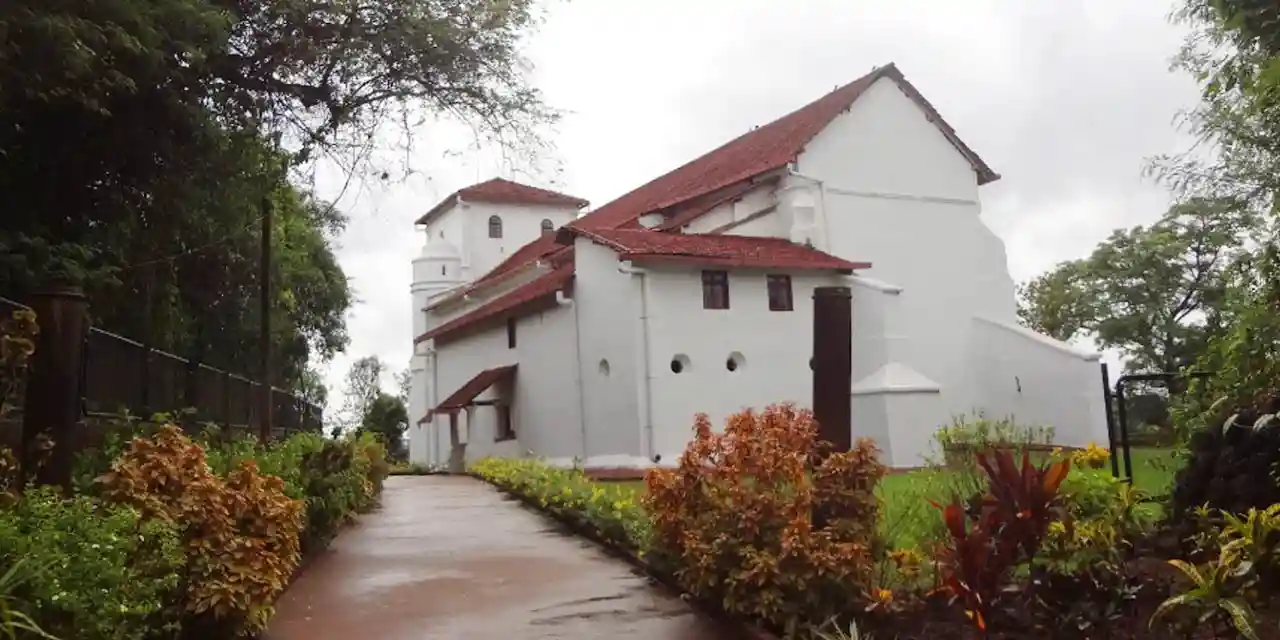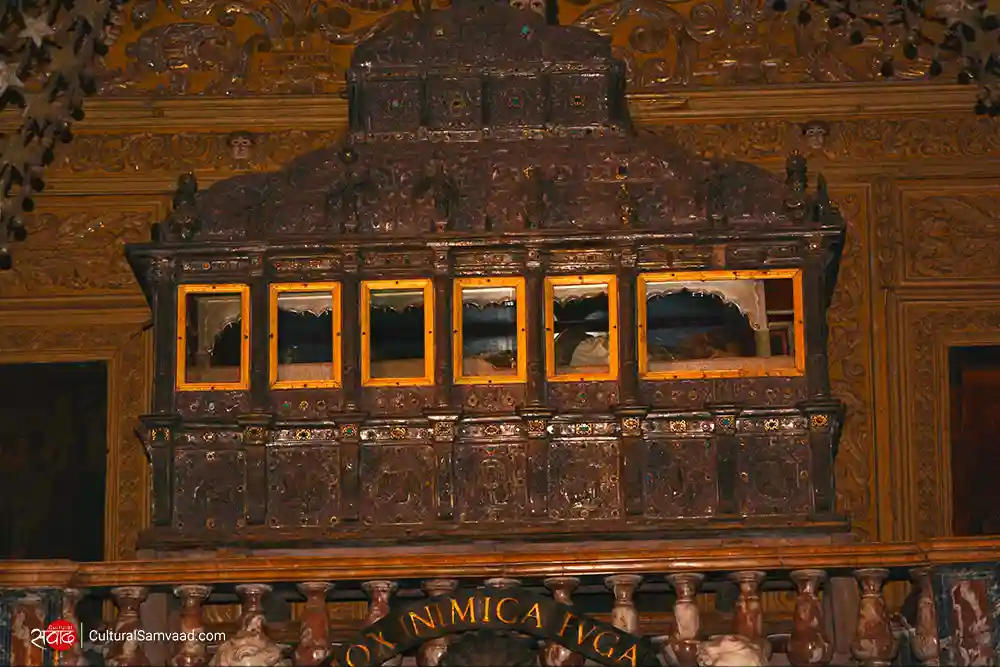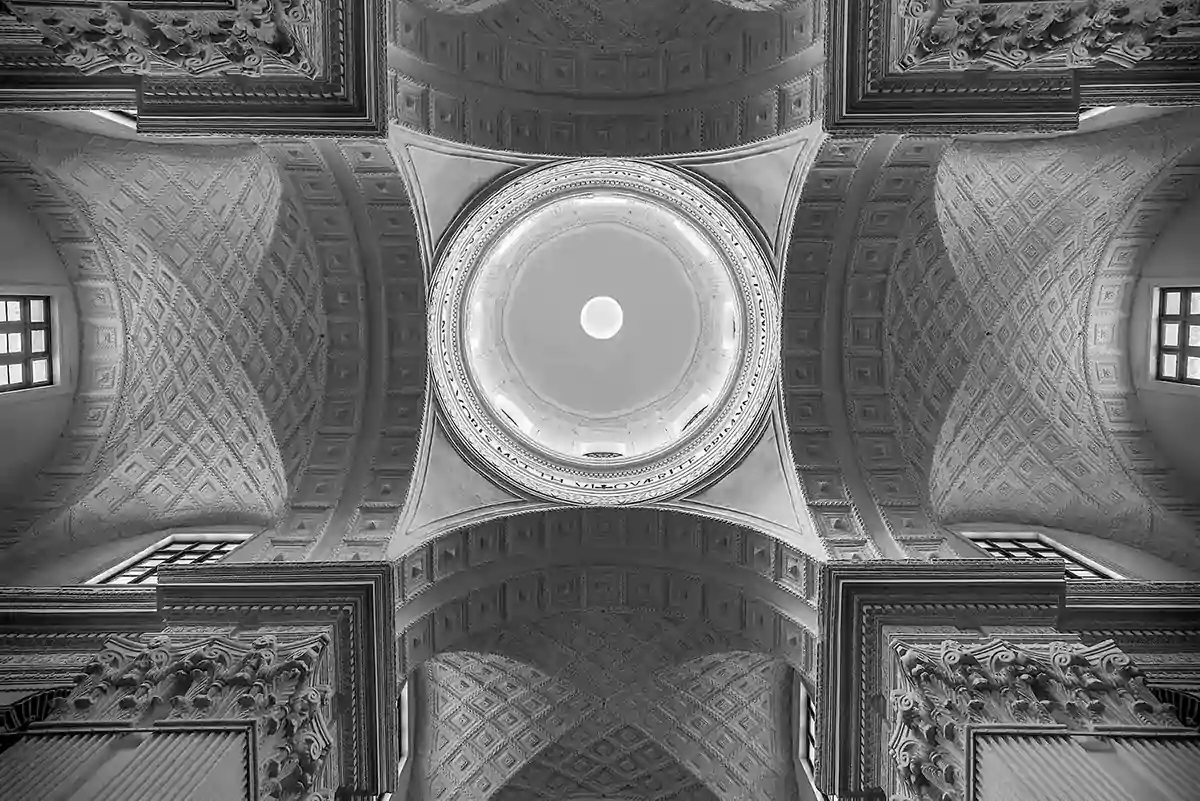Join Cultural Samvaad’s WhatsApp Community
The Churches and Convents of Goa is a serial property that was inscribed in the UNESCO World Heritage List from India in the year 1986. It comprises of seven monuments namely the Chapel of St. Catherine; the Church and Convent of St. Francis of Assisi; the Church of Our Lady of Rosary; Sé Cathedral; the Church of St. Augustine; the Basilica of Bom Jesus and the Chapel of St. Cajetan. They were constructed in the 16th and 17th centuries when Old Goa or Vella was a colony of the Portuguese and also referred to as the ‘Rome of the Orient’ given its critical role in the evangelisation of Asia.
Know More: UNESCO World Heritage Sites in India
This outstanding architectural ensemble of Old Goa followed the architectural styles which were in vogue in Europe during the contemporary period but were adapted to suit Indian conditions through the use of local materials and artefacts. These churches and convents not only represent the roots of a unique Indo-Portuguese style that developed during the Portuguese rule but also exerted great influence in the 16th to 18th centuries on the development of architecture, sculpture, and painting by spreading forms of Manueline, Mannerist, and Baroque art and architecture throughout Asian countries where Christian missions were established.
Chapel of St. Catherine (also Chapel of St. Catarina)

This small but historic chapel is said to have been constructed at the behest of Afonso de Albuquerque, the Portuguese general who also served as a viceroy of Portuguese India, to commemorate his taking of Goa in 1510 on Saint Catherine’s Day. Raised to the status of a cathedral by Pope Paul III in 1534, it was enlarged in 1550 and rebuilt in 1952. The chapel is not functional anymore but the plaque in Portuguese on its wall is testament to its place in history.
‘Here was the door by which the Governor, Afonso de Albuquerque, entered and took this city from the Muhammadans on the day of St Catherine in the year 1510, in whose honour and memory the Governor, George Cabral, ordered this Chapel to be built in the year 1550, at the expense of His Highness’. (Commemorative plaque – English Translation)
Church of Our Lady of the Rosary (also Church of Nossa Senhora do Rozario)

Sitting atop the Holy Hill (Monte Santo); this old, well-preserved church with austere exteriors and interiors still boasts of largely Portuguese Renaissance or Manueline style construction and architectural elements. Consecrated in 1549, the monument is said to be the fruition of a vow made by Afonso de Albuquerque even though it could not be completed in this lifetime. In 1931, the Archaeological Committee of Goa placed a marble slab on the walls of the church with the inscription: ‘From this height, Afonso de Albuquerque watched the re-conquest of Goa on 25/11/1510.’
The limestone-covered external facade of the church has three floors and a two-storied portico flanked by cylindrical buttresses and cylindrical towers that remind one of a fortress. It is constructed in the orthodox, cruciform fashion with a square apse dome and has three altars. The main altar is dedicated to Our Lady of the Rosary and has carvings that demonstrate marked Indic and Hindu influence.
The church is also home to the tombstone of the Portuguese governor Garcia De Sa and the cenotaph of his wife Dona Caterina who was the first Portugues woman to arrive in Goa.
Basilica of Bom Jesus

Consecrated on May 15, 1605, the construction of this stunning church began on November 24, 1594. It was raised to the status of a ‘minor Basilica’ in 1946 and is known for its Baroque architecture combined with Ionic, Doric, Corinthian and composite influences. Its elegant and unplastered exteriors belie the simple but richly adorned interiors and the gilded altars.
The main altar is 30 feet wide and 54 feet high and is dedicated to the Infant Jesus (Bom Jesus). ‘The statue is, as the name imports, small, but by way of contrast there stands, in the centre of the altar, a colossal image of St. Ignatius of Loyola, the founder of the Society of Jesus, which, from its conspicuous position, attracts the attention of every visitor. The attitude of the saint is, as justly re-marked by a traveller, full of dignity, and inspires awe mingled with veneration, the expression of his face wearing the appearance of an inspired person, and his right hand being uplifted like that of a general charging his soldiers to advance but at the same time pointing towards heaven.’[i] St. Ignatius seems to be gazing at the Jesuit emblem of ‘IHS’[ii], and above the medallion is depicted the Holy Trinity of the Father, Son and the Holy Spirit.

The southern side of the Basilica houses the mortal remains of the famous missionary – St. Francis Xavier in an exquisite silver-covered casket which is a blend of Indian and Italian art. It is made of silver panels which depict 32 scenes from the life of the saint and was restored in 2021. Pilgrims travel from far and wide to pay homage to St. Francis on his feast day on December 3 every year.

Church and Convent of St. Francis of Assisi

The timeless Church and Convent of St. Francis of Assisi with its richly carved interiors and paintings is now also home to a museum set up by the Archaeological Survey of India in 1964.
Church of St. Augustine

Consecrated in 1602, the once spectacular church constructed by the Augustinian order is but a shadow of its past self today. The dilapidated church is represented by a lone but imposing and highly recognisable 46-metre-high belfry tower which has four storeys and is made of laterite.
In its heyday, the church had two very high towers which contained enormous bells. The edifice had eleven richly adorned altars and the main altar is said to have been a masterpiece of workmanship. The complex also housed a convent which was described as ‘one of the noblest palaces in the world’ by a 17th century traveller.
The precincts of the Church of St. Augustine were abandoned in 1835 and the vault of the church fell on September 8, 1842. The tower’s huge bell was moved to the Church of our Lady of the Immaculate Conception in Panjim in 1871, where it can be seen and heard till date.
In 2005, archaeologists discovered bone fragments of a woman in the complex’s ruins. The lady is now believed to be Queen Ketevan, a Georgian.
Sé Cathedral

Chapel of St. Cajetan

The small but beautiful church was consecrated in 1661. Constructed by Italian monks of the Theatine order, the church with its hemispherical dome is reminiscent of the Basilica of St. Peter in Rome though it has also been likened to St. Andrea della Vella in the same city. Built of laterite blocks, its external architecture is of the Corinthian order and the interior of the Mosaic-Corinthian. Its beautiful facade looks towards the west, and with its cupola, it presents a majestic appearance. A Latin verse from the Gospel of Matthew is inscribed around the cupola.
‘Quaerite autem primum regnum et iustitiam eius et omnia haec adicientur vobis.’ (Matthew 6.33)
‘But seek ye first the kingdom of God, and his righteousness; and all these things shall be added unto you.’ (Matthew 6.33 – English translation)
The Church’s main altar is dedicated to Our Lady of Divine Providence. It has six other altars besides the main altar and is home to some stunning depictions of the life of St. Cajetan who was a co-founder of the Theatines.

While the stunning heritage churches and convents that dot Goa have been rebuilt and renovated over the centuries, they stand witness to 450 years of Portuguese rule in Goa till its eventual independence on December 19, 1961, and the evangelisation of Asia. These important continuing centres of faith tell us a million stories…those are stories for another day…
Endnotes
[i] Fonesca – page nos. 285-286
[ii] Latin initials for Iesus Hominum Salvator – Jesus, Saviour of Humankind
Select References
Azevedo, Carlos de. “The Churches of Goa.” Journal of the Society of Architectural Historians 15, no. 3 (1956): 3–6.
Fonseca, J. N. da. “An Historical and Archaeological Sketch of the City of Goa.” Reprint. New Delhi: Asian Educational Services, 1986.
https://en.wikipedia.org/wiki/Churches_and_convents_of_Goa
https://whc.unesco.org/en/list/234/
https://artsandculture.google.com/story/the-churches-of-goa-archives-of-architecture-incredibleindia/zQXxMCeaGO-TJg?hl=en
https://goa-tourism.com/
https://www.britannica.com/place/Basilica-of-Bom-Jesus






Add comment